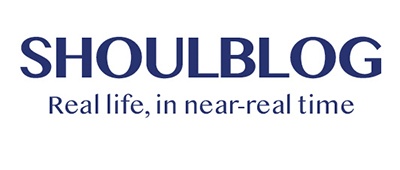
Yesterday I helped clean up a portion of the Mississippi River bank. I was part of a group of 200–300 volunteers who boarded boats from the cobblestones under the St. Louis Gateway Arch and rode downstream a few miles to an area on the Illinois shore, where we disembarked and, trash bags in hand, proceeded to comb the riverbanks for whatever trash we could find.

The event was organized by Living Lands & Waters, a non-profit dedicated to cleaning up America’s rivers. The organization has already done some 140 cleanups in 2015 alone, and over its 17-year history, has removed about 9 million pounds of trash from riverbanks.
That’s a lot of trash. If today’s haul was any indication, that total includes an awful lot of plastic bags, quart-size oil containers, fast-food beverage cups, and potato-chip bags. Seriously, chip bags were probably the single most numerous item we picked up today. The group I was with also found several tires, some rope, and even two basketball backboards, along with a lot of plastic stuff that had been there long enough that you couldn’t tell what it originally was.

I can’t speak for the whole group, but I didn’t find a single aluminum can, and very few plastic beverage bottles, which I guess is a good sign.
The day also marked the first time I saw Asian carp in action; they were jumping out of the water as our small boats approached the shore at the beginning of the cleanup—one even jumped in our boat.
Living Lands & Waters was founded by Chad Pregracke, who, as a teenager growing up in East Moline, Ill., was a mussel-diver and fisherman on the Upper Mississippi River. He became increasingly distressed about the amount of trash he was seeing in the river and on the banks, and decided to do something about it. Working alone or with just a friend or two at first, he started cleaning one area at a time, working day in, day out, living on a houseboat. Over time, more people joined the effort, and sponsors and donors started to sign on. Now, Living Lands & Waters has 14 paid employees who not only clean up trash, but also plant trees, give educational workshops, and recruit and organize thousands of volunteers at hundreds of group cleanups throughout the river system in a given year. The organization has a fleet of equipment including barges, cranes, towboats, small boats, trailers, etc.
 If you’d like to know more, I highly recommend Chad’s book, From The Bottom Up, a recounting of the growth of Living Lands & Waters. The book came out in 2008, so it doesn’t include what is I suppose the greatest honor he’s received so far; in 2013, CNN named him its “Hero of the Year.”
If you’d like to know more, I highly recommend Chad’s book, From The Bottom Up, a recounting of the growth of Living Lands & Waters. The book came out in 2008, so it doesn’t include what is I suppose the greatest honor he’s received so far; in 2013, CNN named him its “Hero of the Year.”

Chad is extremely high-energy, and he brings that energy to every cleanup; yesterday he warmed up the volunteers, bellowing “Hellooooooooooooo, St. Louis!” through a microphone while standing on top of Living Lands & Waters’ crew van. He introduced the “Coach,” who delivered a pep talk/rap, and then Chad gave us some instructions—about a 50-50 mix of information and jokes—and we were on our way.

The work itself was not difficult, other than the constant bending-over and lifting, which become harder, cumulatively, for those of us of advanced age. Fortunately, we didn’t have to dig any discarded, silted-in refrigerators out of the riverbank muck. We left our piles of trash-filled bags on the riverbank and rode the boats back to the starting point under the Arch, and then the boat operators went back with empty boats to pick up the bags and bring them back to Dumpsters waiting on the cobblestones.
We cleaned up only a small portion of the riverbank yesterday. I was only one of a couple hundred people, so my individual contribution, in the big picture, was miniscule. But it sure felt good to get out there and do something, even if only a little bit, and it’s got me looking forward to future cleanup opportunities and considering other ways I can work to preserve our environment.
And hey, folks, let’s properly stow those empty chip bags, OK?
